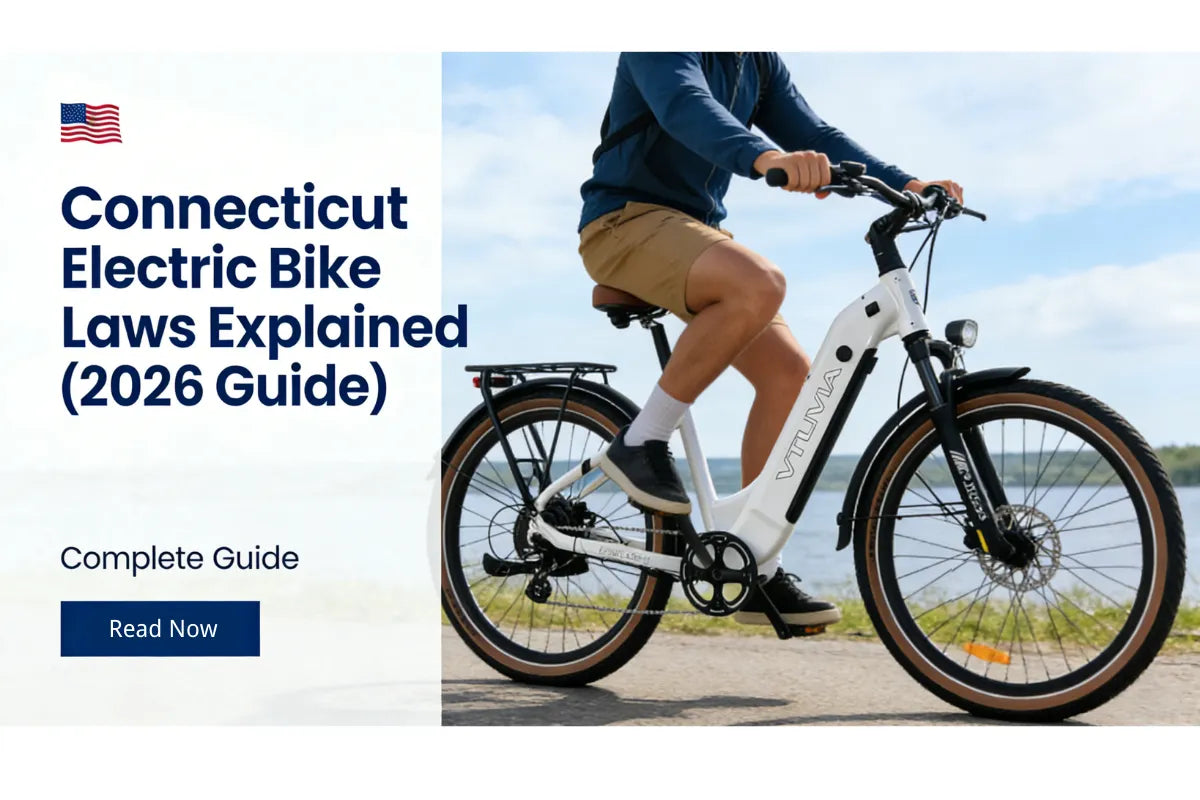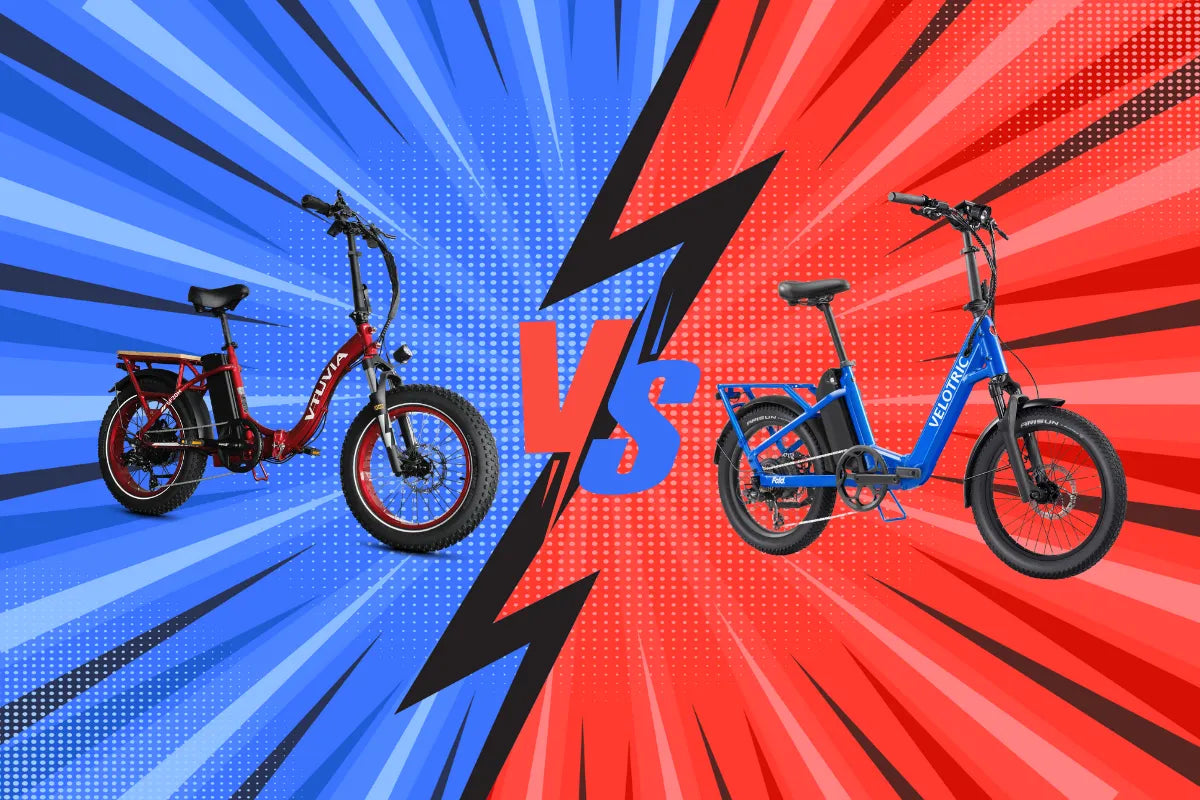Ⅰ. Introduction
Electric bikes, or e-bikes, are bicycles that have an electric motor that can assist the rider with pedaling or provide full throttle power. E-bikes can vary in speed, power, and design, but they all share the common feature of using electricity as a source of propulsion.

E-bikes are becoming popular for many reasons. Some of them are:
- Fun and easy to ride: E-bikes make cycling more enjoyable and accessible for people of different ages, fitness levels, and abilities. You can choose how much assistance you want from the motor, depending on your mood, terrain, or distance.
- Eco-friendly and cost-effective: E-bikes can help reduce greenhouse gas emissions and air pollution by replacing car trips. They also save money on gas, parking, and maintenance. E-bikes have low operating costs and can last for years with proper care.
- Versatile and practical: E-bikes can be used for various purposes, such as commuting, recreation, fitness, or cargo. They can handle different road conditions and weather. They can also carry more weight and travel longer distances than regular bikes.
These are some of the benefits of e-bikes that make them appealing to a wide range of users. However, before you buy or ride an e-bike, you may wonder: do you need a license for an electric bike?
Ⅱ. Electric Bike Classifications
There are three main classes of e-bikes in the United States, based on their motor speed and level of electric assist. These classes are:
- Class 1 electric bikes: These e-bikes have pedal-assist only, meaning the motor only works when the rider is pedaling. The motor stops assisting when the e-bike reaches 20 mph. Class 1 e-bikes are allowed on most bike paths and trails where regular bikes are allowed.
- Class 2 electric bikes: These e-bikes have both pedal-assist and throttle, meaning the rider can use a switch or a lever to activate the motor without pedaling. The motor stops assisting when the e-bike reaches 20 mph. Class 2 e-bikes are generally allowed on roads and bike lanes, but may be restricted from some bike paths and trails.
- Class 3 electric bikes: These e-bikes have pedal-assist only, but the motor can assist up to 28 mph. Class 3 e-bikes may or may not have a throttle that works up to 20 mph. Class 3 e-bikes are considered speed pedelecs and are usually treated as mopeds by law. They are allowed on roads and bike lanes, but not on bike paths and trails. They may also require a license, registration, and helmet to operate.
Ⅲ. Licensing Requirements for Electric Bikes
Federal E-Bike Regulations:
On the federal level, e-bikes are considered consumer products regulated by the CPSC. Most regulations apply to e-bike designers and manufacturers. E-bikes below 20-28 mph and meeting technical specifications are low-speed vehicles that don’t require a license. Faster e-bikes are motor vehicles requiring a license.
State E-Bike Regulations:
State laws on e-bikes vary significantly. Some states regulate e-bikes as motor vehicles, enforcing license, speed limit, and power requirements. Others treat e-bikes as bicycles with minimal restrictions, not requiring a license. Every state has different rules on e-bikes, either as bicycles or mopeds. Riders must know the local laws before riding. Some states require a license but not registration, and vice versa.
For example, in Alabama, e-bikes are motor-driven cycles. Riders need a license, e-bikes require registration, and the minimum age is 14. E-bikes can ride on roads but not sidewalks or bike paths. Nationwide, e-bike owners usually don’t need to register e-bikes or have insurance, except in some states. But some states require a license to ensure e-bike riders understand the local road rules.
Key things to note:
- Most states don't require e-bike registration, insurance, or inspection.
- Some states require a driver's license to operate an e-bike. The minimum age limit varies.
- E-bike usage is allowed on roads in most states, but rules differ for sidewalks, bike lanes, trails, etc.
- The e-bike power, speed, and technical specifications that qualify as a "low-speed electric bicycle" vary in different states. More powerful e-bikes may be regulated as mopeds or motorcycles.
- State parks and trails often have separate e-bike usage rules. Local regulations may be more stringent.
- Penalties for violating e-bike rules differ in each state.
In summary: E-bike riders need to research the specifics of e-bike laws in the states where they ride to follow all requirements and ride safely. The regulations are evolving with the increasing popularity of e-bikes, so regular review of the latest rules is also important.
Ⅳ. Rules of the Road for Electric Bikes
Rules of the Road for E-Bikes Vary in Every State:
Bike laws differ across the U.S. Currently, 44 states regulate e-bikes in some way. Twenty-six states adopted the three-tier e-bike classification system with little change. The other 19 states created their own laws, some based on the tiers and others regulating e-bikes as mopeds or bicycles. E-bike legislation for each state can be found on the People for Bikes website.
Lawmakers in each state considered many details in how they chose to regulate e-bikes. Riders must check their state's specific e-bike laws to know what's permitted. Requirements around licenses, helmets, age limits, and riding areas depend on where you are.
Is There an Age Limit for Riding an E-Bike?
Many states set a minimum age for e-biking, usually 14 or 16 years old. Some states allow supervised riding for younger e-bikers. Riders should verify their state's e-biking age requirement.
Do You Need a License to Ride an E-Bike?
Some states require a license to ride an e-bike. Where needed, e-bikers must be of legal licensing age. Even if a state doesn't require an e-bike license, local regulations may differ, especially in cities. E-bike riders should check the rules in all areas where they ride.
Helmet Laws Differ in Each State and Locality:
We can't list every helmet law here because they vary locally. Many states require helmets for riders under 18. Some mandate motorcycle helmets for all e-bikers. Specifics of helmet laws depend on state and city regulations.
Helmet benefits are substantial, regardless of the law. Most e-bike companies, like Aventon, strongly recommend all riders wear a helmet for safety, especially at e-bike speeds up to 28 mph. Operating any vehicle at higher speeds increases risks, so taking proper safety precautions is critical.
Ⅴ. Electric Bike Safety Tips
To ensure safe riding, e-bike owners should follow some essential tips:
- Maintenance: Perform regular maintenance on your e-bike to keep it in good working order. Check tire pressure, brakes, lights, the chain, and battery before each ride. Recharge the battery after each use and according to the owner's manual. Well-maintained e-bikes are safer and more efficient.
- Proper gear: Always wear a bicycle helmet, reflective gear, and closed-toe shoes. Consider wearing glasses, gloves, and protective pads, especially for new riders. Helmets should meet safety certifications for e-bike speeds and impacts. Bright, reflective clothing makes you more visible to others.
- Riding techniques: Obey all traffic laws as you would on a regular bike. Ride defensively by anticipating potential hazards. Avoid distracted or impaired riding. Go slowly until you get the feel of the e-bike's power and handling. Be extremely cautious on unfamiliar or rough roads. Apply brakes carefully at high speeds.
- Visibility: E-bikes allow you to travel at higher speeds than regular bikes, so extra visibility precautions are critical. Use bike lights, reflective tape or stickers, and reflective clothing, especially if riding at night or in low visibility conditions. Make eye contact with others and signal your intentions clearly with hand gestures while changing lanes or turning.
- Sharing the road: Be courteous to all others while e-biking. Warn pedestrians and slower cyclists that you're passing them. Follow the rules of your local bike lanes and trails. On roads, follow all laws as if operating a vehicle. Be very cautious around vehicle traffic until you gain more experience - vehicles may have trouble seeing you and reacting in time.
Following these essential safety tips while e-biking helps reduce risks, prevent accidents, and ensure the best riding experience for you and others on the road. E-biking opens up more opportunities to get out and ride, so do so responsibly by making safety a priority each time you're out enjoying the ride.
Ⅵ. Electric Bike Insurance
E-bike insurance helps protect you financially in the event of an accident or theft. While not required by law in most places, e-bike insurance is highly recommended given the higher speeds and values of e-bikes compared to regular bicycles.
The main types of e-bike insurance coverage include:
- Liability insurance: Covers injuries to others or damage to their property in an accident you cause. This is the most important coverage for e-bikers to have. E-bikes can cause more severe damage at higher speeds, and liability insurance helps ensure you won't face major financial loss from a costly lawsuit.
- Collision insurance: Covers damage to your own e-bike in an accident. This is optional but helps pay for costly e-bike repairs or replacement after a crash. Collision coverage may come with deductibles to keep premiums lower.
- Comprehensive insurance: Covers e-bike theft or damage from events other than collisions, such as fire, vandalism, or natural disasters. This is also optional but provides more complete coverage.
Be sure to discuss your e-bike usage, needs and risk concerns with insurance agents to determine appropriate coverage types and amounts for your situation. By investing in the right e-bike insurance, you can ride with greater confidence knowing you have financial protection in the event of unforeseen circumstances. Let me know if you have any other questions about e-bike insurance. I'm happy to explore this topic further.
Ⅶ. Benefits of Riding an Electric Bike

E-bikes provide several benefits over regular bicycles and other modes of transport.
The main advantages of e-bike riding include:
- Environmental benefits: E-bikes are carbon neutral, producing zero direct emissions. They reduce pollution from vehicle use and traffic congestion. A single car produces substantially more emissions in a year than an e-bike. By riding an e-bike instead of driving for short trips, individuals can lower their environmental footprint significantly over time.
- Health benefits: E-biking provides light exercise that can improve cardiovascular health and endurance when ridden regularly. Although e-bikes have electric motors, riders still get activity and burn calories by pedaling. For less able individuals or in hilly areas, e-bikes make cycling accessible as a form of exercise that otherwise may not be possible.
- Economic benefits: E-bikes are more affordable than cars in terms of fuel costs, taxes, insurance and maintenance. The electricity to charge an e-bike costs only a few cents. Not having to pay for gas or parking fees saves e-bike owners money. Commuting by e-bike instead of driving can save thousands per year in transportation costs.
- Convenience benefits: E-bikes allow you to get places faster than a regular bike and without the need to find parking upon arrival. You can avoid traffic jams by riding in designated bike lanes. Running errands or commuting by e-bike takes less time so you have more leisure hours in your day. E-bikes provide mobility without relying on vehicles. You have the freedom to get around under your own power.
Riding an e-bike is an easy way to help the environment, improve your health and finances, gain more free time, and achieve independence from vehicle usage for many short trips. E-bikes make cycling more practical and accessible for daily transportation needs. Choose vtuviaebike for your needs.
Ⅷ. Conclusion
In summary, here are the key points about e-bike licensing requirements:
Recap of electric bike licensing requirements:
- E-bike licensing laws vary in each state. Some states require a driver's license or special e-bike license, while others have no license requirements. E-bikers must check their state's vehicle code for the specifics.
- Even when not legally required, e-bike manufacturers often recommend riders have a regular driver's license due to the higher speeds and power of e-bikes compared to bikes.
- Municipalities may have additional licensing or registration requirements for e-bike use. Local regulations should be verified in each area of riding.
- Licensing requirements often depend on the class of e-bike, with higher speed models more likely needing a license to operate. However, all e-bikes must follow the same traffic laws as other vehicles when riding on public roads.
Final thoughts on the importance of licensing:
While e-bike licensing aims to regulate the operation of electric bicycles for safety, licensing alone does not guarantee responsible riding. All e-bike riders, whether a license is required or not, must educate themselves on and obey the rules of the roadway, maintain their e-bike properly, ride defensively and exercise good judgment whenever riding.
However, when implemented properly, e-bike licensing does help authorities and others identify riders, hold them accountable, set minimum age requirements, and restrict higher-powered e-bike access when needed. Licensing is an important step towards legitimizing e-bikes as vehicles suitable for transportation infrastructure and gaining access to bike lanes, paths and roadways.
Overall, understanding e-bike licensing requirements and why they exist helps riders operate legally and safely. Following all regulations and using good sense each time you ride has benefits for individuals, communities, and the future of sustainable electric transportation and mobility.
Pedal Electric With Vtuvia
Do you need a license for an electric bike? E-bikes from vtuvia may not require a license to ride. Moreover, vtuvia e-bikes provide a super convenient and eco-friendly mode of transportation for many people.
If you're ready to ride, check out Vtuvia's stylish yet affordable e-bike models! Vtuvia offers high-quality electric bikes at lower prices by selling directly to customers. Their e-bikes come fully assembled and ready to ride up to 40-80 miles on a single charge. While following all recommended safety tips like wearing a helmet, you'll be set to cruise using electric pedal-assist at up to 20 mph in most places.
Vtuvia aims to make premium e-bikes more accessible to all through competitive pricing and excellent customer service. Their e-bikes provide an opportunity for more people to experience the benefits of electric cycling, whether or not a license is required where they ride. An e-bike from Vtuvia gives you freedom and flexibility to reduce your carbon footprint in style.





Share:
Electrify Expo 2023: Vtuvia's Innovative Electric Bikes on Display - VTUVIA EBIKE
V Day - Free Electric Bike Maintenance and Repair Service